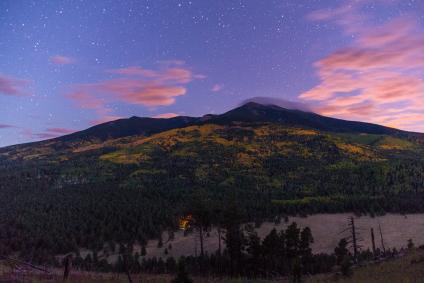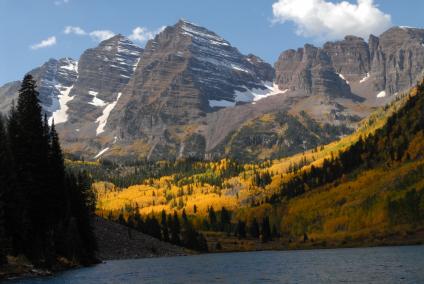Outdoor Safety
Safety is key to enjoying Fall colors
As a visitor to public lands, you are asked to follow certain rules and to be responsible for your own safety. There is something for everyone on forests and grasslands: scenic drives, winding trails, quiet back roads, majestic mountains, deserts, and an abundance of wildlife and vegetation. But nature can be unpredictable. Here are tips to help you enjoy your visit:
Preparation is your first step
- Check the website for the forest or grassland of your destination for special
warnings, such as fire activity, road or camp closings, and bear sightings. - Study maps carefully and plan your trip based on your experience. Know
where you are going before you leave. - Let someone know when you plan to leave, where you are going, when
you plan to return, and then stick to that plan. Also let them know your car make,
model and license plate number. - Dress accordingly, wary that the weather in many parts of the country can
turn suddenly. Dress in layers and bring waterproof gear and extra socks
and shoes. - Bring food and water. Always carry enough supplies and provisions to last
longer than you have planned to stay. - Bring a buddy. You do not want to be by yourself in case of an emergency.
- Know first-aid and take a first-aid kit with you.
- Learn how to pack a survival pack if you're planning on spending a few
days in the great outdoors.
Know where you are going
- Take your map with you. And don’t forget the compass.
- Stay on designated roads and trails.
- When traveling on a road or highway, pull over in designated areas only.
- Stay safely off the road when parked or when taking photographs.
- On trails, always be aware of your surroundings. It’s easy to unwittingly venture
off a trail and become lost.
Let wild animals be
- Help keep wildlife “wild” by not approaching. Consider all as dangerous.
Alter your route so that you will move away from animals without disturbing
them and do not block an animal’s line of travel. - Do not feed wildlife. Animals that get food from people may become
aggressive. And human food may harm a wild animal’s digestive system,
or even kill them. - Photograph and watch wildlife from observation areas. Use binoculars,
spotting scopes or telephoto lenses to minimize stress to animals and to
provide a safe viewing distance for you. - If you find what you believe to be an "orphaned" or sick animal leave them
alone. Often the parents are close by and are waiting quietly for you to leave. - Your pets must be restrained at all times. Or better yet leave them at home
if you are solely on a wildlife viewing adventure. They may startle, chase,
harm, or even kill wildlife. - Learn to recognize signs of alarm. These are sometimes subtle. Leave if an
animal shows them. Nesting birds will chirp and flutter their wings; for other
animals watch for raised ears, skittish movements or alarm calls. - Keep noise at a minimum, not just for wildlife but also for benefit of other humans.
- Teach your children how to act when exploring nature. Never chase or harass
wildlife. It is against the law. Besides, it’s just not nice.
Be weather wise
- Keep an eye on current and predicted weather conditions. Weather
can change very quickly. - Know the signs for approaching storms or changing weather conditions.
- Avoid bare ridge tops, exposed places, lone trees, streams, and rocks during
lightning storms. Find shelter in a densely forested area at a lower elevation.
If you get lost
All trails are marked with signs (where intersections meet) and diamond blazes or markers. However, signs are sometimes vandalized or stolen. Pay close attention to your surroundings and landmarks, and relate this to your location on a map.
- Stay calm. Panic is your greatest enemy. Try to remember how you got to your present location.
- Trust your map and compass, and do not walk aimlessly. If you are on a trail, don't leave it.
- Stay put if it is nightfall, if you are injured, or if you are near exhaustion.
- As a last resort, follow a drainage or stream downhill. This can be hard going but will often lead to a trail or road.



